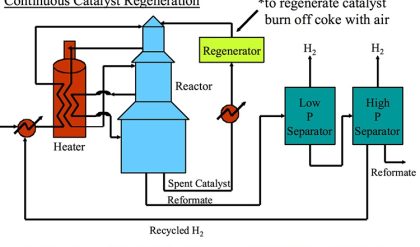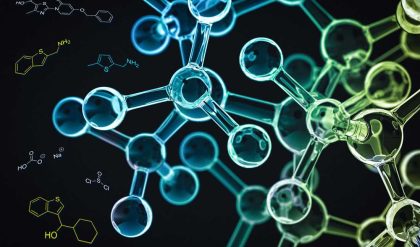Catalytic reforming is a process for producing the reformate of high octane gasoline, mainly from heavy straight run naphtha.
Features
Since endothermal reactions are dominant in Catalytic Reforming reaction, multiple reactors are arranged in a series with a reheating furnace to maintain the reaction rate for reforming reaction. Catalytic Reforming processes are classified as continuous, cyclic, or semiregenerative depending upon the frequency of catalyst regeneration. The equipment for the continuous process is designed to permit the removal and replacement of catalyst during normal operation. The coke laydown and thermodynamic equibrium yields of reformate are both favored by low pressure operation.

Typical process flow of Catalytic Reformer plant.
Functions and benefits of catalytic reforming

Catalytic reformer plant forAromatics
Catalytic reforming is a process for converting straight run naphtha into catalytic reformate. Through this unit, the hydrocarbon molecules are not cracked but their structures are rearranged to form higher octane aromatics. The reforming plant plays an important role in oil refinery, that supplies 30-40% of all gasoline demand. Catalytic reformate contains a large amount of aromatic components, and is the main feedstock in benzene, toluene, xylene (BTX) production.
The reforming plant produces a large amount of hydrogen rich gas, and so the reforming plant plays as a hydrogen supplier for the hydrodesulfurization plant and hydrocracking plant in the oil refinery. TOYO has extensive experience with the licensed technologies of UOP, AXENS and others, and has designed and built more than 10 units of the catalytic reforming plant both within Japan and abroad.


